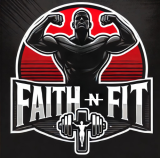A strong lower back is critical for lifting, running, and even sitting pain-free throughout the day. If you’re relying only on bodyweight movements or machines, you’re missing a powerful tool: dumbbells. These versatile weights can target your spinal erectors, glutes, and core — all while improving stability and functional strength.
In this article, we’ll break down the best lower back dumbbell exercises that you can add to your training routine for strength, posture, and injury prevention.
Why Train the Lower Back With Dumbbells?
Lower back dumbbell exercises offer unique benefits:
- Improved spinal stability through dynamic movement
- Increased muscle activation via unilateral and free-weight loading
- Better range of motion than machines or barbells
- Corrects imbalances between left and right sides
Plus, dumbbells are ideal for at-home workouts, small gyms, or anyone looking to build functional strength without loading the spine too heavily.
1. Dumbbell Romanian Deadlifts (RDLs)
- Primary muscles: Erector spinae, glutes, hamstrings
- Why it works: Teaches hip hinge mechanics and strengthens the entire posterior chain
- How to do it: Hold a dumbbell in each hand in front of your thighs. With a slight knee bend, push your hips back and lower the dumbbells along your legs until you feel a stretch in your hamstrings. Keep your back straight and return to standing.
✅ Tip: Focus on slow, controlled lowering to maximize time under tension and lower back activation.
2. Dumbbell Suitcase Deadlifts
- Primary muscles: Quadratus lumborum, obliques, erector spinae
- Why it works: Builds lateral spinal stability and corrects imbalance
- How to do it: Place a dumbbell on one side of your body. With a neutral spine, bend down and pick up the dumbbell like a suitcase. Stand tall and repeat. Switch sides each set.
✅ This unilateral lift activates core stabilizers and reduces the risk of future lower back injuries.
3. Dumbbell Good Mornings
- Primary muscles: Spinal erectors, glutes, hamstrings
- Why it works: Improves posture and strengthens the lower spine
- How to do it: Hold a dumbbell at your chest or on your shoulders. With a slight knee bend, hinge at the hips and push your glutes back until your torso is nearly parallel to the floor. Return to the start.
✅ Use light weight and perfect form to avoid strain — this is a control-based movement.
4. Dumbbell Reverse Lunges with Rotation
- Primary muscles: Glutes, obliques, spinal stabilizers
- Why it works: Adds a dynamic twist to engage the core and lower back
- How to do it: Hold one dumbbell at chest level. Step back into a lunge and rotate your torso toward your front leg. Return to start and switch legs.
✅ This move combines lower-body strength with rotational spinal mobility — great for athletes.
5. Dumbbell Bird Dogs
- Primary muscles: Erector spinae, glute medius, deep core
- Why it works: Trains spinal stability with minimal load
- How to do it: Get on all fours. Hold a light dumbbell in one hand and extend that arm while kicking the opposite leg back. Hold, then return to start.
✅ Great for warming up or cooling down while reinforcing spinal alignment and control.
How Often Should You Train the Lower Back?
To avoid overtraining, include lower back dumbbell exercises 2–3 times per week as part of your leg or full-body workouts. Aim for:
- 2–4 sets
- 8–12 reps per exercise
- Focus on perfect form and slow tempo
Pair these movements with core training and mobility work for maximum back protection and performance.
Who Should Use Dumbbells for Lower Back Training?
✅ Beginners: Dumbbells are safer and easier to control than barbells.
✅ Home gym users: No need for fancy machines — just a pair of dumbbells.
✅ Athletes and lifters: Improve spinal endurance and reduce injury risk.
✅ Desk workers: Reverse postural issues caused by prolonged sitting.
Read Next
Key Takeaways
- Lower back dumbbell exercises improve spinal strength, stability, and posture.
- Movements like RDLs, suitcase deadlifts, and good mornings offer functional benefits beyond bodybuilding.
- These exercises are beginner-friendly, low-impact, and ideal for anyone looking to prevent back pain and build resilient posterior muscles.
References
Subscribe now and get a 14-day free trial workout app for iPhone users.



